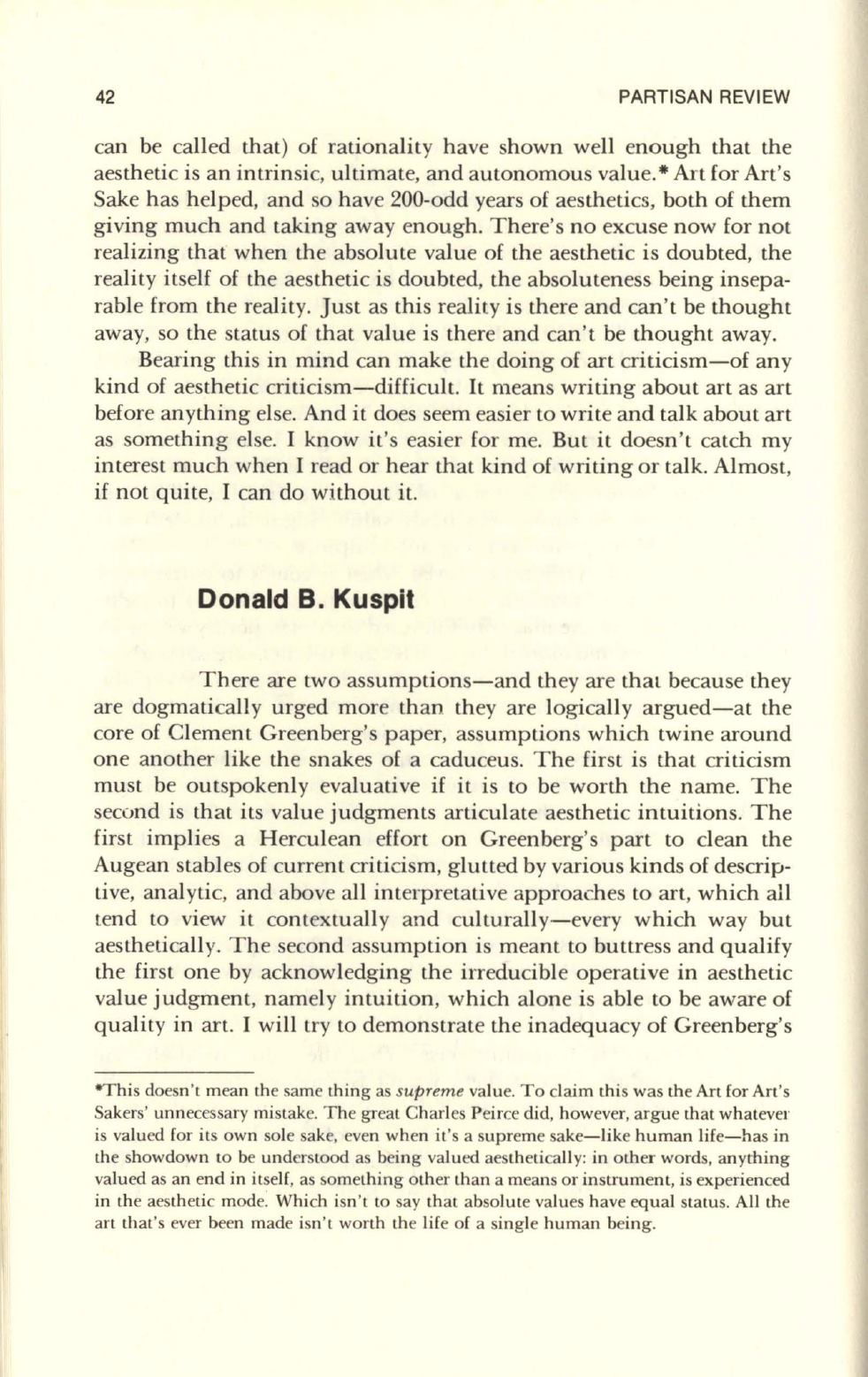
42
PARTISAN REVIEW
can be called that) of rationality have shown well enough that the
aesthetic is an intrinsic, ultimate, and autonomous value.· Art for Art's
Sake has helped, and so have 200-odd years of aesthetics, both of them
giving much and taking away enough. There's no excuse now for not
realizing that when the absolute value of the aesthetic is doubted, the
reality itself of the aesthetic is doubted, the absoluteness being insepa–
rable from the reality. Just as this reality is there and can't be thought
away, so the status of that value is there and can't be thought away.
Bearing this in mind can make the doing of art criticism-of any
kind of aesthetic criticism-difficult.
It
means writing about art as art
before anything else. And it does seem easier to write and talk about art
as something else. I know it's easier for me. But it doesn't catch my
interest much when I read or hear that kind of writing or talk. Almost,
if not quite, I can do without it.
Donald B. Kuspit
There are two assumptions-and they are that because they
are dogmatically urged more than they are logically argued-at the
core of Clement Greenberg's paper, assumptions which twine around
one another like the snakes of a caduceus. The first is that criticism
must be outspokenly evaluative if it is
to
be worth the name. The
second is that its value judgments articulate aesthetic intuitions. The
first implies a Herculean effort on Greenberg's part to clean the
Augean stables of current criticism, glutted by various kinds of descrip–
tive, analytic, and above all interpretative approaches to art, which all
tend to view it contextually and culturally-every which way but
aesthetically. The second assumption is meant to buttress and qualify
the first one by acknowledging the irreducible operative in aesthetic
value judgment, namely intuition, which alone is able to be aware of
quality in art. I will try to demonstrate the inadequacy of Greenberg's
"This doesn't mean the same thing as
supreme
value. To claim this was the Art for Art's
Sakers' unnecessary mistake. The great Charles Peirce did, however, argue that whatever
is valued for its own sole sake, even when it's a supreme sake-like human life-has in
the showdown to be understood as being valued aesthetically: in other words, anything
valued as an end in itself, as wmething other than a means or instrument, is experienced
in the aesthetic mode: Which isn't to say that absolute values have equal status. All the
art that's ever been made isn't worth the life of a single human being.


